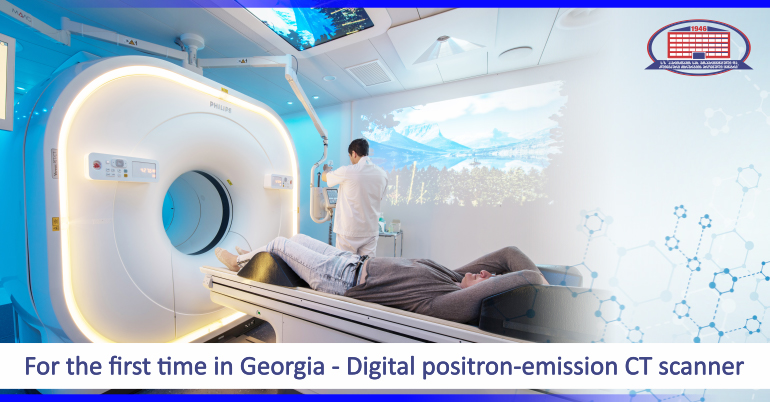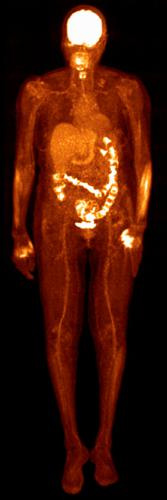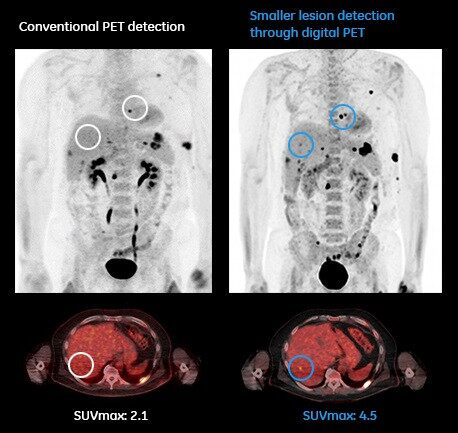
PET / CT, i.e. positron-emission tomography is a nuclear medicine examination method, which is a non-alternative for cancer diagnostics.
To this date, this examination (PET-CT) is the golden standard in oncology, whose results change treatment tactics almost by 36%.
Positron-emission tomography is high tech, combined product because the system allows a simultaneous performance of two examinations – positron-emission tomography and computed tomography. Subsequently, data from two extremely important examinations are compiled.
It should be noted that during cancer diagnostics, with the mentioned method the most accurate anatomical and functional picture of tumor expansion is received. It's entirely possible to detect cancer of the smallest size.
Without a positron-emission tomography, it is improbable to determine the correct diagnosis, and therefore, the tactic of treatment.
With positron-emission tomography, it’s possible to:
- Determine the expansion level of oncologic disease.
- Determine the primary source of the metastatic process.
- Differentiate between benign and malignant tumors.
- Evaluate the effectiveness of chemotherapy and radiation therapy.
- It’s also necessary when selecting localization necessary for biopsy.
- It’s necessary for diagnostics on the first stage, as well as during and after the completion of treatment.
- Help with radiation therapy planning and etc.
National Center of Surgery soon will be equipped with the first digital PET/CT in eastern Europe and post-soviet union sphere.
National Center of Surgery, radiotherapy department’s radiation therapist, nuclear medicine specialist Shorena Esiashili discusses positron-emission tomography with us.

– What organs are examined with PET/CT?
have been registered in recent years, using which more detailed examination of the heart and nervous system is conducted. In the case of a heart, it is possible to determine the condition of ischemia, diagnose dementia in neurology, Parkinson's disease, various forms of seizures, brain tumors.– PET/CT examines the entire human body. It is mainly used in oncology, albeit quite many isotopes
– What are the advantages of PET-CT?

– PET/CT is an accredited to functional research methods. It shows metabolic changes in the body. Metabolic changes always precede morphologic ones. It’s possible to detect oncologic disease at the early stages with this exact examination method.
With this very important research, we determine oncologic disease stages, receive an accurate anatomical and functional picture of tumor expansion. PET/CT has also used to asses the results of chemotherapy and radiation therapy. Treatment tactics change almost by 36% as a result of this examination.
–How is PET-CT conducted?
– PET/CT is a non-invasive diagnostic method. The patient intravenously receives isotope. The examination of the patient takes place in one hour. With a low-density computed tomography, whole-body examination duration lasts for20 minutes.
We would like to remind readers that the department of radiotherapy functions in the National Center of Surgery. Oncologic patients in the department are able to receive radiation therapy with the latest generation high-tech linear accelerators. In the department of radiotherapy treatment method is chosen by Georgian specialists together with invited experts from the U.S (Emory University, Atlanta) and Spain (Genesis Care oncology multidisciplinary institution). Therefore, citizens of Georgia have an opportunity to get the treatment that is up to American-European standards.
National Center of Surgery address: Tbilisi, Dighomi, Chachava N5.
You may contact National Center of Surgery’s call center at 577 119 119 or 2 02 25 25
In case of any issues, you may contact National Center of Surgery’s radiation therapist Shorena Esiashvili for consultation at 577 67 11 89.
Wish you health!
What are patients interested in
Chemotherapy
Qauestion:: Hello, My mother received several courses of chemotherapy, because of metastatic involvement of bone and liver. During that time platelet count significantly decreased and only presented with small skin hemorrhages. In chemotherapy, platelet count sometimes increases or decreases, she simultaneously takes Revolade (50mg) on a daily basis and underwent platelet transfusion several times that had an only short-term effect. Is it possible to find another solution for the mentioned problem at your clinic? Thanks in advance










